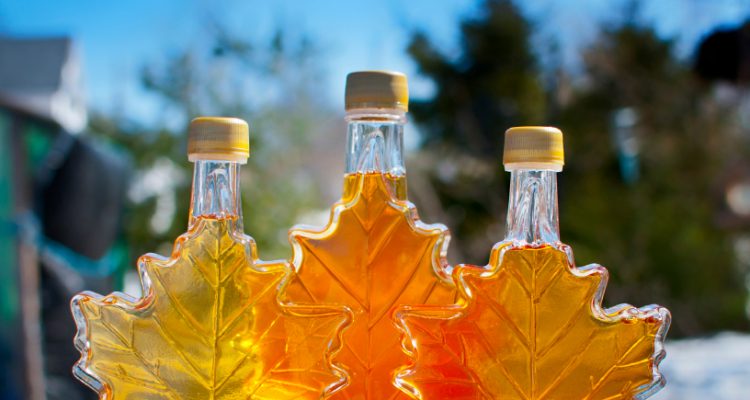
The next time you’re about to bite into a stack of deliciously healthy pancakes, and are looking to drizzle maple syrup over them, consider whether or not your maple syrup is actually real.
On Thursday, Dr. Oz posed the question to his followers and got the twitter world wondering—how pure is maple syrup?
Have you ever stopped to wonder if your maple syrup, a breakfast favorite for millions, is actually real? https://t.co/CugilN6bOu
— Dr. Mehmet Oz (@DrOz) May 12, 2016
In the U.S., maple syrup is placed in one of two grades:
- Grade A: A premium type of maple syrup that is meant for eating. Grade A is then divided into three other subgrades, measured by how translucent it is (light amber, medium amber and dark amber)
- Grade B: A darker type of maple syrup, primarily used for baking or cooking
When shopping for maple syrup, make sure the bottle actually states maple syrup—not
‘breakfast syrup’ or ‘pancake syrup’. Maple syrup is derived from maple trees and the sap is boiled to make syrup. Pancake syrup on the other hand is filled with high fructose corn syrup and artificial flavors—a poor imitation for maple syrup and definitely not as healthy as the real thing.
According to the United States Department of Agriculture:
- Maple syrup is natural, organic and has the same amount of calcium as milk.
- It only contains 50 calories per tablespoon.
- Maple Syrup is mineral-rich (i.e. potassium, magnesium, manganese, calcium, iron, and phosphorus) and contains B vitamins, biotin, folic acid and niacin.
Fun fact: Did you know that it takes about 40 gallons of sap to create one gallon of maple syrup? One tap hole is drilled in a maple tree, which then provides approximately 10 gallons of sap each year. Four maple trees are needed to make one gallon of pure maple syrup. This is why maple syrup is more expensive than pancake syrup—but considering how delicious and healthy pure maple syrup is compared to its counterpart, it’s well worth the cost.
Source:
“Maple Syrup, Healthy Native Foods,” United States Department of Agriculture web site, http://www.nrcs.usda.gov/Internet/FSE_DOCUMENTS/nrcs141p2_024360.pdf , last accessed May 13, 2016.













